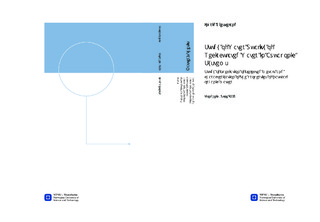| dc.description.abstract | This thesis describes an extensive study on how water quality changes over time in a small scale recirculating system where waste water from smolt production was used to grow lettuce for commercial use. The treatment effect of lettuce on different solutions was tested and corresponding lettuce yield was evaluated. In order to enhance the treatment effect a rock wool filter was used on certain solutions. Important water quality parameters were measured every day, and the element concentration in water, lettuce and soil was analyzed. Natural organic matter in the solutions was also analyzed.The filter had no influence on either element concentration of organic matter, and observed changes were therefore attributed lettuce or soil. The organic matter increased during the experiment period, but the total concentration was too low to evaluate the character and the ability to form complexes. Phosphorus, potassium, manganese, zinc and copper decreased significantly in most of the waste water solutions, these elements are all nutrients for plants, hence they are most likely taken up by the lettuce. Despite the uptake of essential nutrients the lettuce did not grow optimally and had several signs of distress symptoms both during and at the end of the experiment. Magnesium and chloride increased significantly due to evaporation from the reservoirs. Together with the high concentration found for sodium in all the waste water solutions it was believed that the lettuce was exposed to toxic levels of salt. This was a possible explanation to why the lettuce did not grow sufficiently. The lettuce analysis showed that the concentration of most of the nutrients were not sufficient for growth. The lettuce had clear signs of nutrient deficiency such as discolored leaves and stunted growth. These symptoms were thought to be a result of both salinity and nutrient deficiency. The content of toxic metals was higher in lettuce cultivated with waste water than lettuce cultivated with a commercial nutrient solution, but lower than what is considered as limiting for growth. Considering optimal conditions for lettuce growth the pH of the waste water solutions was too high, and the electrical conductivity was higher than recommended.The rock wool filter appeared to release metals such as aluminum and iron. Both these metals are toxic to fish and it was concluded that rock wool filters should not be used in with aquaponics. One of the challenges with integrated production of salmon smolt and plants is the high content of salt in the waste water. The salt is necessary in most cases for production of salmon smolt, but inhibits plant growth. A possible solution to this is to use a more salt tolerant plant than the one used in this experiment. If the plant is able to treat the water for nutrients and other waste products, without being depressed by the salt, re-use of the water is possible in addition to getting a marketable product. | nb_NO |

